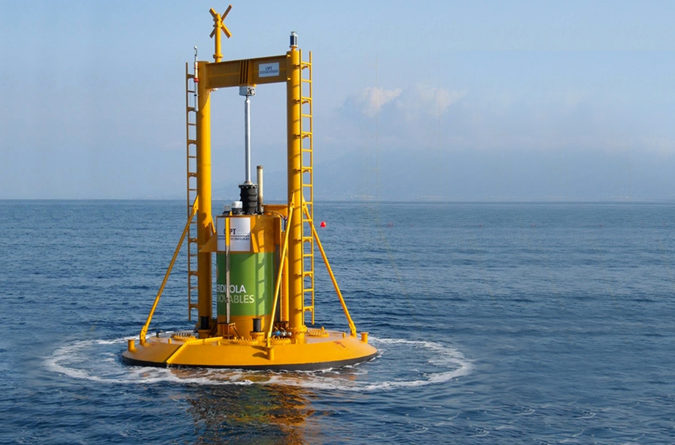Roddy Scheer & Doug Moss
EarthTalk
Wave power advocates cheered in September 2016 when Hawaii-based Naval researchers started feeding power from two experimental offshore wave energy devices into the grid on nearby Oahu, representing the first time the American public could access electricity derived from ocean waves. The trickle of energy from these experimental devices doesn’t amount to anything substantial yet, but wave energy’s potential is huge.
Analysts think we could derive at least a quarter of U.S. electricity needs by harnessing wave power around our coasts. Most other countries around the world have coastlines they could exploit for wave energy, as well, if engineers could create affordable technology to capture and transport the energy back to shore where it would be used to power local communities or get fed into existing larger power grids.
But just because we can tap ocean energy big time doesn’t mean we necessarily will, given the high costs of getting started, technical issues with maintaining offshore equipment, and the challenges of scaling up for mass consumption. The world’s first experimental wave farm, the Aguçadoura Wave Park off the coast of Portugal, went online in September 2008 with three wave energy converter machines, but ceased operations only two months later when bearings on the equipment gave way, underscoring the technical challenges of running complicated heavy machinery in unstable marine environments.
While such technical problems may be frustrating, financial concerns loom larger over wave energy’s future. Two of the biggest wave energy endeavors in the world, Pelamis and Aquamarine, both based out of wave-battered Scotland, went belly up recently despite funding from the Scottish government and plans to build out the biggest wave energy farms in the world based on the success of earlier prototypes.
Aquamarine’s CEO John Malcolm chalked up his company’s demise to “the considerable financial, regulatory and technical challenges faced by the ocean energy sector as a whole.” Meanwhile, cheap natural gas and the surge in solar and wind power options have kept ocean energy on the back burner.
But wave power is far from dead in the water. Besides the experimental wave farm off Oahu, two larger projects are being built off the coast of the United Kingdom, while three additional projects are underway around Australia. Funding for these projects has come from not only the host governments but also the private sector. American defense contractor Lockheed Martin, for one, is a big player in deployment of wave power technologies and is a driving force behind the 19 megawatt, grid-connected wave power station currently in the works near Victoria, Australia.
Here in the U.S., wave energy advocates say the federal government has done too little to encourage research and development in this promising niche of the energy sector. Subsidies and tax incentives helped solar and wind power grow from pipe dreams in the 1980s to significant players in the global energy mix of today. Wave power advocates would like to see similar incentives employed to boost the development of ocean-based renewable energy sources, but for that to happen the American public will need to speak up to get Congress to act.
CONTACTS: Hawaii Clean Energy Initiative, www.hawaiicleanenergyinitiative.org; Lockheed Martin, www.lockheedmartin.com.
EarthTalk® is produced by Roddy Scheer & Doug Moss and is a registered trademark of the nonprofit Earth Action Network. To donate, visit www.earthtalk.org. Send questions to: question@earthtalk.org.






